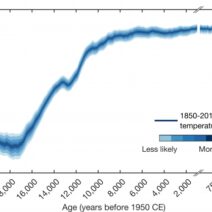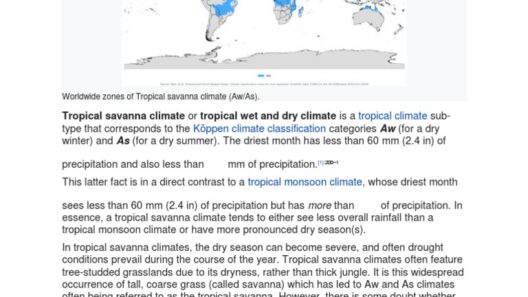Soil, often overlooked, plays a monumental role in climate regulation. It serves not only as a medium for plant growth but also as a crucial component in the global carbon cycle. Understanding soil composition is essential for comprehending its impact on climate. The components of soil—minerals, organic matter, water, and air—interact in complex ways that ultimately shape our environment and influence climate change.
The foundation of soil’s influence on climate lies in its composition. Composed primarily of minerals such as sand, silt, and clay, soil formation is the result of weathering rock over time, along with the contributions of organic material from decomposed plants and animals. The soil’s physical structure affects its ability to retain moisture and nutrients, which in turn affects plant growth. Healthy soils rich in organic matter are more effective at sequestering carbon dioxide from the atmosphere, playing a pivotal role in mitigating greenhouse gas emissions.
Different types of soils, classified based on their mineral content, reveal varied capabilities regarding carbon storage. For instance, clay soils have a high cation-exchange capacity, allowing them to hold onto nutrients and water effectively, while sandy soils drain quickly and may be less effective in retaining carbon. Organic soils, like peat, store vast amounts of carbon due to their high organic content, reflecting a stark contrast to mineral-rich soils.
Soil microbiomes also contribute significantly to its composition and, consequently, to climate dynamics. These microorganisms play a critical role in decomposing organic matter, thus releasing nutrients back into the ecosystem. However, they also influence the soil’s ability to store or release carbon. A healthy soil microbiome can enhance soil fertility and carbon sequestration, while a disturbed microbiome can lead to carbon release, exacerbating climate change.
One of the dirty little secrets about soil and climate change is the phenomenon of soil erosion. When topsoil is lost due to erosion, valuable organic matter and nutrients are removed from the ecosystem. Erosion is often exacerbated by practices such as deforestation, overgrazing, and intensive agriculture, leading to a decline in soil health. The result is a vicious cycle: degraded soil leads to reduced plant growth, which in turn diminishes the soil’s capacity to store carbon, further contributing to climate change.
Moreover, soil’s water retention capacity is influenced by its composition. Soils rich in organic matter retain water more effectively, which can buffer against droughts. In contrast, compacted or depleted soils are often incapable of holding sufficient moisture, exacerbating water scarcity in arid regions. As climate change increases the frequency and intensity of extreme weather events, maintaining healthy soil is imperative for ensuring food security and ecosystem resilience.
Soil composition doesn’t merely influence carbon sequestration; it also affects climate feedback loops. For example, when soil warms due to rising temperatures, the release of previously stored carbon in the form of carbon dioxide and methane can occur. This process, known as positive feedback, poses a threat to global climate stability. The higher the temperatures climb, the greater the risk becomes that soils will cease to be carbon sinks and instead become sources of greenhouse gases.
To combat these challenges, innovative practices in soil management can lead to improved outcomes. Agroforestry, cover cropping, and conservation tillage are strategies that preserve or enhance soil health. These techniques foster biodiversity, promote organic matter accumulation, and improve water infiltration, ultimately leading to a more resilient climate system. By adopting sustainable practices, farmers and land managers can enhance the carbon storage potential of soils while also practicing effective land stewardship.
Soil management is not only vital for agricultural productivity but also for climate resilience. Restoration of degraded soils can result in significant carbon sequestration and contribute to climate adaptation. Soil restoration projects, such as reforestation and wetland restoration, have the capacity to enhance biodiversity and improve ecosystem services, leading to healthier landscapes better fortified against climate impacts.
In addressing climate change, the recognition of soil’s role must be underscored in policy frameworks and scientific research. Governments should prioritize sustainable land management practices that bolster soil health. Investments in soil research and restoration initiatives can yield substantial benefits, not just for farmers, but for society as a whole. As the world grapples with climate change, enhancing our understanding of soil composition becomes an urgent necessity.
Conclusively, soil composition reveals a plethora of secrets that can enhance or hinder our attempts to combat climate change. By safeguarding and enriching our soils, societies can tap into nature’s own mechanisms for climate regulation and conservation. Protecting soil is not just about preserving an ecological resource; it represents a fundamental strategy in the global fight against climate change. The dirty secrets of soil must propel us toward sustainable practices that ensure its vitality for generations to come.







